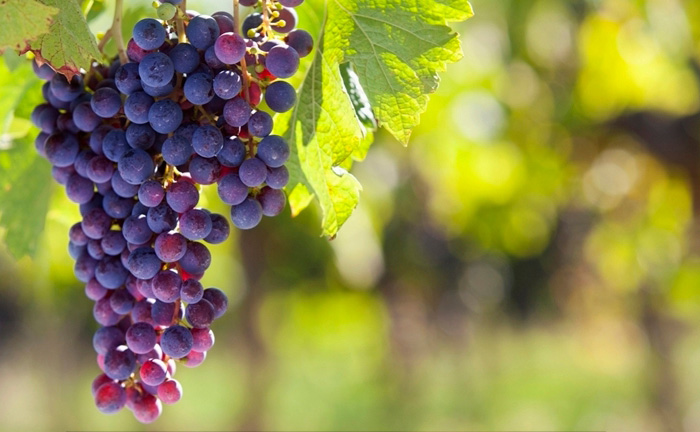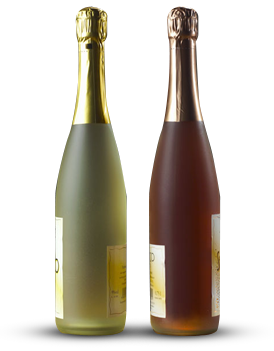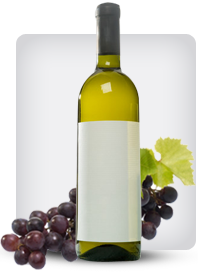

Category: Zinfandel Wine
Wine Tasting In Malaga
Posted onMalaga is one of the cultural centres of southern Spain and it bequeathed to the world flamenco dance, cubist art and some very tasty wines. You can enjoy sweet Spanish wines when you go wine tasting in Malaga and they are the perfect accompaniment to all tapas.
Wine has been produced in Malaga for centuries by various peoples including the Phoenicians and the Moors. Despite being Arabic and forbidden by their religion the Moors were even enticed to produce and drink wine. Along with fantastic Moorish architecture it is one of the legacies which they have left to Malaga.
Most Malaga wines are made from the Muscat grape but they can also be of the Pedro Ximenez variety. They tend to be very rich with an earthy taste. Visitors to this part of Spain can visit a number of attractive and interesting Bodegas including the Antigua Casa de Guardia in the mountains of Malaga. Located high up in Axarquia amidst groves of fig trees, this is an award-winning winery which has been favoured by Isabel II, who was once Queen of Spain. In honour of her visit the Moscatel Isabel II wine was named after her. The Antigua Casa de Guardia is the oldest bodega in Malaga having been founded in 1840 and the wines are kept in oak casks.
This is just one of many worthwhile testing destinations within the Sierra Nevada and if you want to find out more about wine production in the area then the Mijas Wine Museum is the place to go. Located in San Sebastian, it is open all year around and offers introductory courses to Spanish wine as well as regular tasting sessions.
The Malaga Wine Museum
Within the province of Malaga is the town of Marbella which started life as a small fishing village and has many wine bars that serve tapas. Near to Marbella in Ojen is the Malaga wine Museum.
More than 20,000 tourists go to the museum every year and the surrounding area is where many of the best Malaga wines were created. Indeed the museum itself is a restored distillery. In the 19th century a brand of snaps was first made here which was named after its creator Pedro Morales as Pedro Morales Aguardiente de Ojen.
Malaga Restaurants
When considering which wines to drink is important to take into account what you are eating. Malaga is a seaside city in the south of Spain which has a fantastic range of local food and restaurants.
These restaurants include the famous Chiringuitos, which are beachside bars or taverns that serve freshly-caught fish. Malaga has some white wines that will go well with the catch of the day.
If you want to drink world-class wines in a star-studded setting then visit La Posada de Antonio, a restaurant which is owned by actor Antonio Banderas. The chef there prides himself on serving authentic Spanish food in conjunction with an intriguing wine list. The grilled meat and tapas are both recommended.
Wine Storage Refrigerator
Posted onWith everyone trying to find ways to be more economical, people have learned to find ways to enjoy quality times with friends, instead of spending large sums of money going out on the town. There are always good times to be had when you are able to enjoy a fine bottle with your friends.
Some people don’t see a reason to put their bottles in the refrigerator, and most might simply put the wine inside of a regular refrigerator. However, what many people don’t know, is that putting it in the refrigerator can ruin your bottle of wine. This is why you need to purchase a storage refrigerator.
Many are under the assumption that wine doesn’t go bad, because it’s an alcoholic beverage. This in fact isn’t true. While it’s true that it is an alcoholic beverage, it can and will go bad. It will go bad from the air, and from any mold and bacteria that might be floating around. So, how can mold and bacteria get into your bottle if it is corked? This is because corks breathe. This means that they allow air, and whatever is in the air into the bottle of wine. So, if someone has moldy or old food in the refrigerator, these bacteria and spores can find their way inside of your nice bottle of wine. Especially if it has been opened already, it will spoil. You’ll know it’s spoiled, because it will have a bad, sour, vinegar taste. In some cases, bad wine can make you sick. So to avoid this, be sure to purchase a storage refrigerator.
Another advantage of having a wine storage refrigerator, is that certain wines, such as white wine, are highlighted in flavor when they are chilled. A standard refrigerator is set for the temperature of your food. But a wine refrigerator will be specially designed, and temperature set to not only keep your bottle of wine fresh, but to also bring out the best notes and flavors. So it really is to your advantage to buy a storage refrigerator.
A wine storage refrigerator makes a nice gift for yourself, or for the wine enthusiast in your circle. Instead of waiting on line for an overpriced bottled of wine, you and your friends can enjoy perfectly chilled bottles right in your home, in your environment. You can set up events, such as wine tastings, or wine and cheese nights. Or, if you’d like to host something more intimate, you can create a dinner date that features wines that will have a wonderful flavor, because they were stored in a storage refrigerator. When you and your guest notice the difference in the flavor, and when you stop having to pour a good bottle down the drain, you will be very glad that you bought a wine storage refrigerator.
Related Zinfandel Wine Articles
Wine industry in Ravello
Posted on
When You book a nice apartment in Positano Apartment in Positano – Amalfi Coast, with us You’ll realize how beautiful and magic this town is.
Born in the climate of the Thousand and unification of Italy, the wines of the Bishop’s 145 years ago. When Pasquale Palumbo cured with extraordinary wisdom and dedication, the vines attached to the Bishop’s house in Ravello, better known as Bishop’s. Hence the name of the wine. The brand is maintained through four generations now managed with a sure hand by Marco Vuilleumier, heir of so much tradition. Then the wine Pasquale Palumbo joins the hotel of the same name, which will in a few years to such an audience of distinguished guests, which has few comparisons in terms of Europe.The list of personalities – from Wagner to Greta Garbo is the real Sweden and Denmark to Humphrey Bogart, John Huston, Lauren Bacall, Grieg, Malaparte – always accompanies it, and correspondingly, the hotel’s history and that of wine .
The Bishops of Palumbo became a close pair, where one refers to the other and both are identified with the unique image of Ravello. Curated and produced the old fashioned way in not more than thirty thousand bottles of wine cellars Episcopio born between Ravello and Scala, in Vigna San Lorenzo 350 meters above sea level. The types are the classical ones provided by the specification of Doc: Red, Rosé and White. The first, with an alcohol content of 12.5, is extremely durable and perfectly preserved, almost twenty. Born from a blend of Aglianico and Piedirosso Serpentara, the variety it very local. The output of around eight thousand bottles.The Rose, Ravello Rosé labeled as Doc, uses the same blend and is credited for the full structure, soft and intense. The production is far less, only four thousand bottles, a wine whose streak of fresh acidity hides good 12 degrees.
For the Ravello Bianco Doc is the only grape used instead of scale, variety in San Nicolas, Tender White, White Zita window. Even in this case the first vine is not reflected across the boundaries. The wine of great personality and finesse, with a pleasant aftertaste, is the most widely produced. More valuable is instead the other White, Vigna San Lorenzo, built in only five thousand bottles.Here the composition of the Ravello Bianco adds Pepella, a grape of ancient and renamed as among the most typical of the area. Bishop’s also produces, as table wines, two reds, a Special Reserve (vintage ’92) from Aglianico grapes, and Piedirosso Serpentara, and Confalone from Aglianico.
Book our apartment in Positano, and You’ll enjoy the unique atmosphere of this beautiful town
Biodynamic Wine Regions
Posted onBiodynamics may be described as being the science of the earth’s life forces. At just once, the planet was designed to heal and sustain itself. But, humans and also the pollution that accompanies them have managed to break this earth to such an extent that it’s no longer in a position to renew itself at a rate faster than that at that it’s being destroyed. Biodynamism acknowledges the basic agricultural principles in nature and makes an attempt to figure together with these principles rather than against them. By promoting them during this means, the biodynamic farmer seeks to permit the earth to regain a number of its unique ability to heal and restore itself. By its very nature, biodynamism continues to develop and evolve, rather than being a set formula.
One in every of the strategies that set biodynamic agriculture apart is that of operating according to a calendar that respects the earth and its many intricate systems and unspoken laws. This calendar takes cognizance of the magnetic fields of the world, yet as the way the sun, moon, stars and planets interact with ours.
The preparations for this sort of agriculture, whether or not for cultivating grapes for wines or alternative crops, are usually rather unsophisticated and even rudimentary. Herbs and minerals are infused into the soil in keeping with the farmer’s experience and knowledge and primarily based on what the soil would, under ideal circumstances, receive and generate. Packing these herbs et al into the horn of a dead cow, which is then buried within the soil for slow infusion, is a common practice on biodynamic farms, each in South Africa and around the world.
Most of the original supporters and developers of biodynamic farming are from the generation born within the 1960’s and 1970’s. They were the generation that lived through the movement towards environmental sustainability, recycling, etc… Such is the good thing about their efforts towards biodynamism that even the skeptics are reconsidering their stance on this different agricultural method. Wine farmers all over the globe are included during this movement. As a key player within the wine market, South Africa displays a firm determination to explore and implement such effective initiatives. However, despite even the foremost wholehearted support, many of these biodynamic supporters will confess to not understanding the total intricacies of the process or why it has proven to be so successful. What they do apprehend is that their love, respect and commitment to the land is yielding tasty, healthy grapes, ideal for wonderful wines.
New York Wine Country
Posted onThe Yankees (not my personal team to root for) are in the 2010 baseball post season again. They are representing a city of nearly 8.5 million people, about 27,900 humans per square mile. Contrast New York City’s population with that of Los Angles (nearing 4.0 million) or Chicago (nearing 3.0 million). Ironically, New York State’s population is ranked only third most among U.S. states. Still the state would seem to be nothing but a “sea of people”. New York State actually consists of a lot of rolling countryside dissected by many river valleys with elevations ranging from sea-level to Mt. Marcy at 5,344 feet. This countryside, I came to find out, has several areas where vineyards and wineries flourish.
New York State has six areas that currently define its wine country. The areas are 1) Lake Erie-Chautauqua, 2) Niagara Escarpment, 3) Finger Lakes, 4) Hudson River Valley-Catskills, 5) New York City and 6) Long Island-North Folk-Hamptons. Another area that previously has not been considered a part of the state’s wine country is Central New York-Lake Ontario, an area experiencing recent wine industry growth. The three most important areas Lake Erie-Chautauqua, Finger Lakes and Long Island-North Fork-Hamptons have over 95 percent of the vineyard acres, over 75 percent of the bonded wineries and over 95 percent of the tons of grapes produced in the entire state. In an article by Debra J. Goon, she discusses New York’s grape and wine industry as contributing $ 3.76 billion to the state’s economy. New York ranks third behind California and Washington in grape production by volume.
The grape growing seasons in the state range from about 180 days in the northern areas (Finger Lakes and Upper Hudson River Valley) to 230 days near the Long Island area. Annual precipitation across the state averages 30 to 50 inches per year. Wines produced include Sparkling Wines, Seyval, Riesling, Pinot Noir, Ice Wines, Chardonnay, Cabernet Franc, Cabernet Sauvignon, Gewurztraminer, and Merlot. Many American hybrid grapes such as Catawba, Delaware, Elvira, Ives and Isabella are also grown. Important French hybrid grapes grown, noted to make great wines, are Cayuga, Vidal and Vignoles. Concord grapes are grown primarily for use in juices.
The state has several notable wine trails that would make excellent tour destinations. Trails can be found near the cities of Fredonia, Niagara, Penn Yan, Fayette, Watkins Glen, Marlboro, Clinton Corners, Williamson, Alexandria Bay and Riverhead. Visiting a winery could easily be coupled with visiting other state attractions like Niagara Falls, Sterling Renaissance Festival, Erie Canal, Everson Museum, Allegany State Park, Catskill Park or even the Long Island Beaches. Often a side-trip taking you away from your primary destination focus is a welcome relief; at least it has been that way for me. I bet you might even find a wine that you can add to your list of favorites.
Take the time to check out New York’s wine industry. As I always say, buy the wine you like, store wine properly in a wine refrigerator, serve it at the proper temperature and enjoy it immensely.
See Wine and Beverage Storage Solutions: http://idealwinecoolers.com/
See Wine and Beverage Information and Facts: http://winecoolerblog.com/
Related Zinfandel Wine Articles
popular posts
-

How to Decant Merlot Properly: A Guide to Unlocking Its Full Potential Merlot, with its plush texture and approachable profile of plum, cherry, and chocolate notes, is one of the world’s most beloved red wines
12-22 2025While often enjoyed straight from the bottle, taking the time to decant a Merlot can dramatically elevate the experience. Decanting serves two primary purposes: Read More
-

Pinot Noir Wine Subscription Reviews: A Curated Journey for the Discerning Palate For wine enthusiasts, few grapes inspire as much devotion and discussion as Pinot Noir
12-21 2025Celebrated for its elegance, aromatic complexity, and remarkable ability to express *terroir*, Pinot Noir can be both thrilling and intimidating to explore. This is Read More

